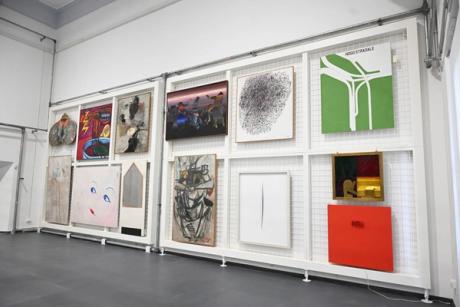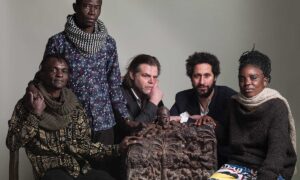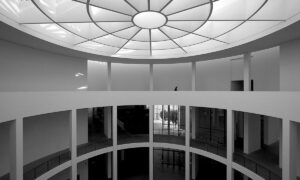
Most visitors to the ancient Dominican church and museum of Santa Maria Novella in Florence go to see its Renaissance gems, such as Masaccio’s Holy Trinity, frescoes by Ghirlandaio and Lippi, and Giotto’s Ognissanti Crucifix.But now, it is also a place where you can see works by some of the biggest artists of the 20th century that had been languishing in storage for years. The Florentine Civic Museums’ depository, which opened on the site in January, brings around 300 Modern and contemporary works belonging to the city out into the open. Moving forward, more than 4,000 more works will be added to what’s on view. It’s all part of the reassessment of storage that’s been going on in museums across the world: Depot Boijmans Van Beuningen in Rotterdam became the first purpose-built accessible museum storage facility when it opened in November 2021, and in London the V&A’s East Storehouse is set to open later this year, showcasing more than 250,000 objects.Generally, large museums are able to show around 5% of their collections—though for some it’s substantially less—a fact lamented by curators and gallery-goers the world over. “In Italy, and in Florence in particular, there are so many works of art that many of them remain in storage, because of a lack of exhibition space, depriving people of the chance to view extraordinary works,” says Alessia Bettini, the deputy mayor of Florence.On a rainy Saturday afternoon in Florence, The Art Newspaper joined one of the first public tours of Florence’s new storage facility, organised by the cultural association Mus.e. The facility is located in an area that was the lodging space of Pope Eugene IV during the council of Florence in 1439, and later, at the start of the 16th century, the workshop of Leonardo da Vinci as he devised the cartoon for his Battle of Anghiari, the so-called “Lost Leonardo”, commissioned for the Palazzo Vecchio. Renovation of the 1,100 sq. m space, which was most recently been used as a Carabinieri training school, has cost around €2 million. Eventually, it will house around 4,500 works of art over its three floors.The exhibits to date are mostly from the Alberto Della Ragione Collection—which was donated by the merchant to the city in 1970. There are works by the Futurist Carlo Carra; as well as Mario Mafai and Antonietta Raphael Mafai, who together founded the Modern art-focused Scuola Romana, and Carla Accardi, an abstractionist connected with the Arte Informel and Arte Povera movements of the mid 20th century. The newly displayed set of works boosts the representation of woman artists within Santa Maria Novella’s main collection, although notably that collection does boast what is believed to be the only version of the Last Supper to have been painted by a female artist during the Renaissance: Plautilla Nelli‘s rendition from around the 1560s.Going forward, says Bettini, more 20th-century works from the city‘s holdings will be put on show as well as the sinopies—or preparatory sketches—for the fresco cycle of the church’s Green Cloister, and 19th century works from the now-closed Risorgimento and Historical-Topographical museums of Florence. Having so many long-unseen pieces on show again is, she says, “a great result not only for Florence, but for culture and art in general”.
























